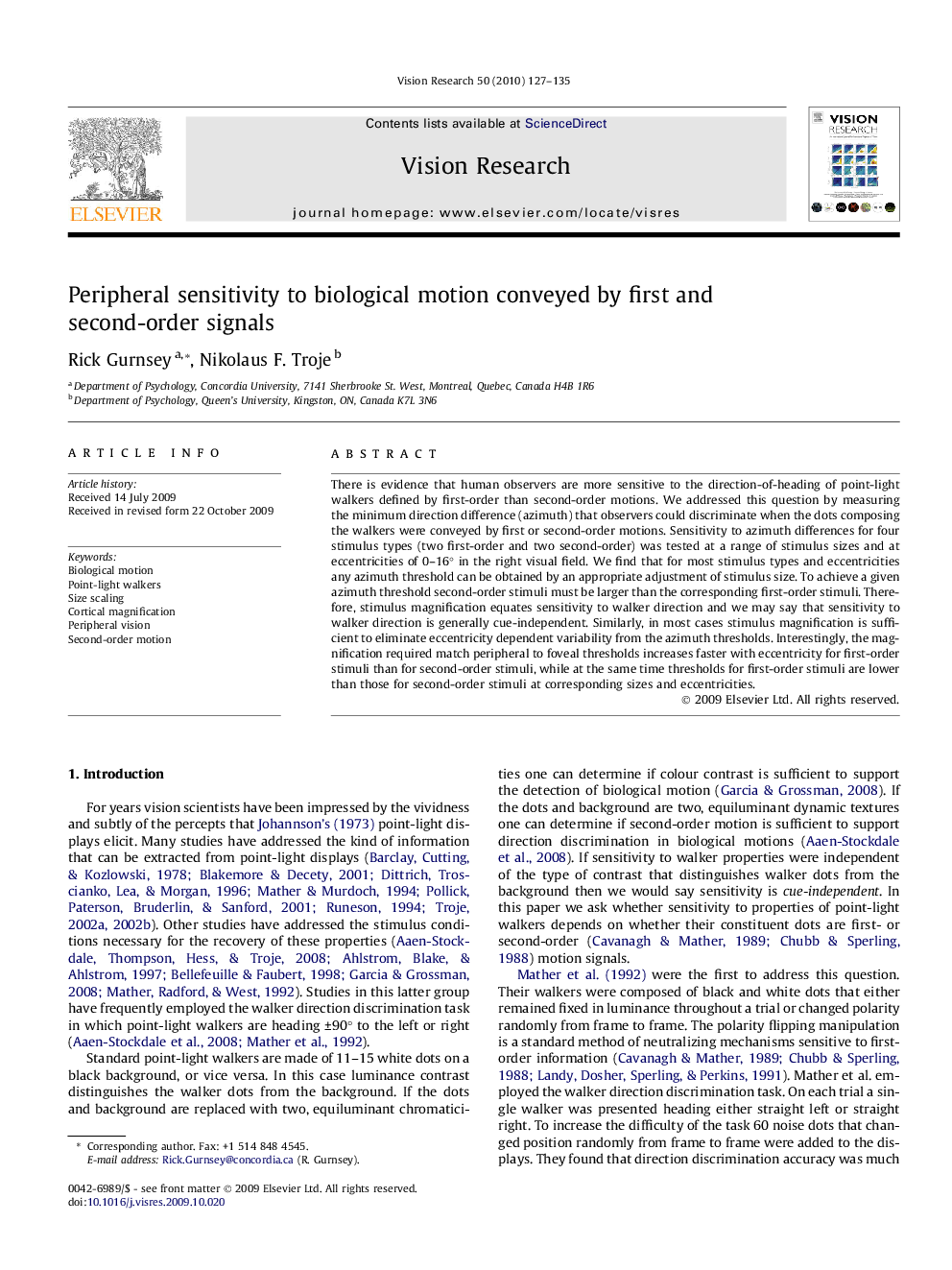| کد مقاله | کد نشریه | سال انتشار | مقاله انگلیسی | نسخه تمام متن |
|---|---|---|---|---|
| 4034518 | 1263463 | 2010 | 9 صفحه PDF | دانلود رایگان |

There is evidence that human observers are more sensitive to the direction-of-heading of point-light walkers defined by first-order than second-order motions. We addressed this question by measuring the minimum direction difference (azimuth) that observers could discriminate when the dots composing the walkers were conveyed by first or second-order motions. Sensitivity to azimuth differences for four stimulus types (two first-order and two second-order) was tested at a range of stimulus sizes and at eccentricities of 0–16° in the right visual field. We find that for most stimulus types and eccentricities any azimuth threshold can be obtained by an appropriate adjustment of stimulus size. To achieve a given azimuth threshold second-order stimuli must be larger than the corresponding first-order stimuli. Therefore, stimulus magnification equates sensitivity to walker direction and we may say that sensitivity to walker direction is generally cue-independent. Similarly, in most cases stimulus magnification is sufficient to eliminate eccentricity dependent variability from the azimuth thresholds. Interestingly, the magnification required match peripheral to foveal thresholds increases faster with eccentricity for first-order stimuli than for second-order stimuli, while at the same time thresholds for first-order stimuli are lower than those for second-order stimuli at corresponding sizes and eccentricities.
Journal: Vision Research - Volume 50, Issue 2, 25 January 2010, Pages 127–135